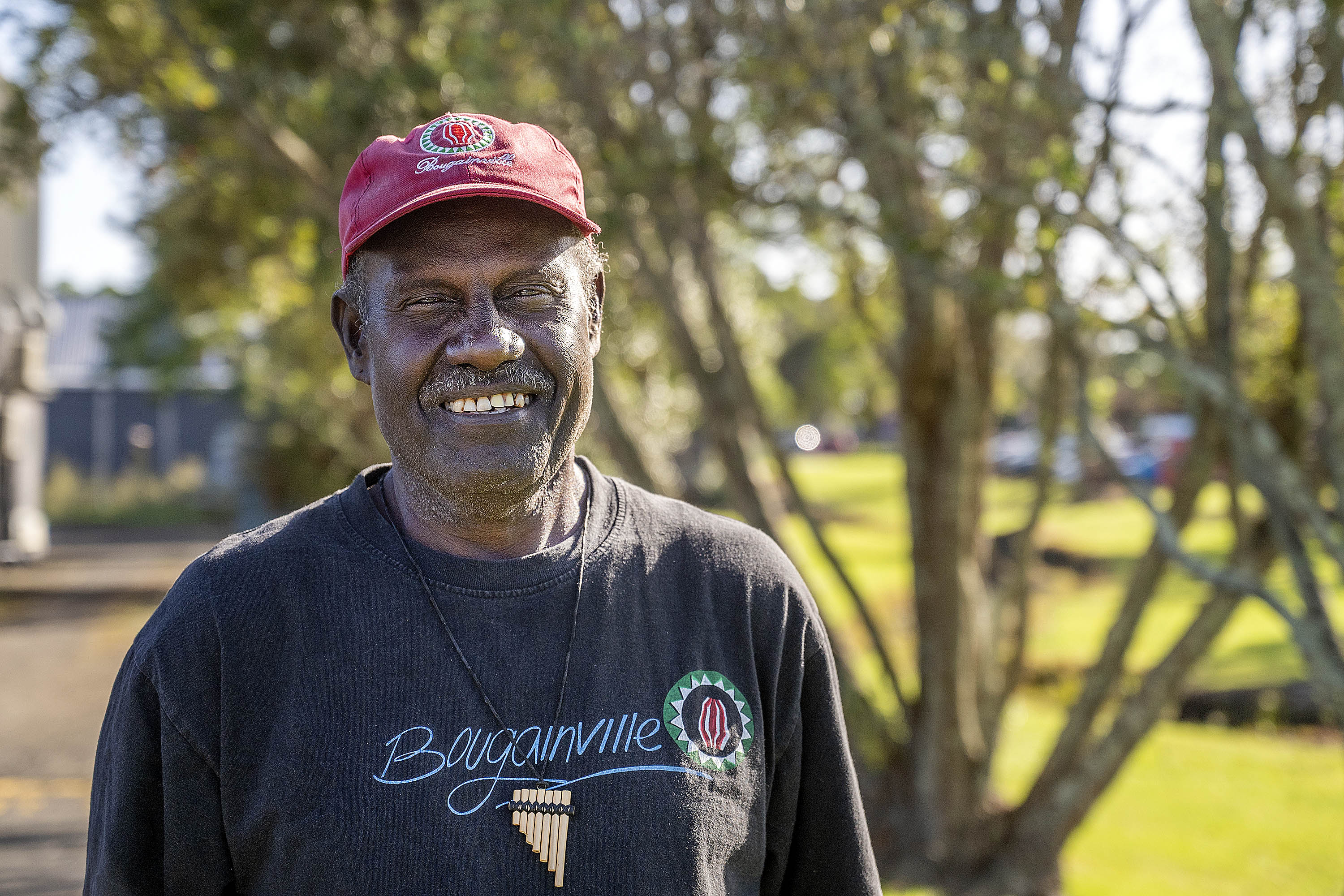Joe's carving a future for Bougainville

LOCAL LEARNING: Joe Dutaona is visiting New Zealand, including Whakatāne, to learn about Māori carving and to promote tourism to his homeland, Bougainville, Papua New Guinea. Photo Troy Baker E5347-11
Kathy Forsyth
Joseph “Joe” Dutaona, a carver from Bougainville, Papua New Guinea, is on a month-long visit to New Zealand, eager to learn about Māori traditional carving methods.
During his stay, which includes a week in Whakatāne and participation in the Ngākau Carving Symposium in Thames, he hopes to gather knowledge that he can take back to his homeland.
The artist has already visited rurally located Raroa Marae and met Eastern Bay carvers and was visiting Rotorua yesterday to meet more.
“I am really interested to visit sites where New Zealand Māori carve,” he said.
His trip, supported by Volunteer Service Abroad, is part of his ongoing effort to encourage younger generations in Bougainville to take up carving and learn about its cultural significance.
In addition to carving, Dutaona is a tour guide and is passionate about promoting tourism in Bougainville. He believes that tourism could be a sustainable source of income for the island, in contrast to relying solely on mining.
“Bougainville people are peace-loving,” he said, emphasising the island’s beauty and untapped potential for eco-tourism.
“I am from Pokpok Island and we started a small resort there, working first with New Zealand volunteers and police.”
He said ships visited Bougainville and visitors liked to see historical sites related to World War II and places such as Paguna Mine.
His interest in carving dates to his childhood, when he began experimenting with the pieces of wood found in his family’s garden. As he moved to the coast, it was driftwood that captured his imagination.
“I didn’t have proper tools, but I had a small knife and that was how I started.”
Carvers in Bougainville find mangrove wood, driftwood and other native wood for their pieces, creating figures and animals, and telling stories with their carvings.
In Whakatāne, Dutaona is a guest of Lindsay Riddick, an avid supporter of the arts.
“I first met Joseph on Christmas day in 2010 and he was organising an event that was a bit like our sculpture symposiums here,” said Riddick.
During that event, Riddick was struck by figure carvings depicting men holding an upe – a traditional headpiece worn by young men in Bougainville to symbolise their transition to adulthood.
Recognising the significance of the carvings in the context of Bougainville’s recent civil war, Riddick purchased one, which now resides in his home.
“I saw it as a political statement that they were just 10 years past the crisis and were holding the symbol of Bougainville high.”

The Bougainville people had a very strong affiliation with New Zealand, he said.
“It was the New Zealanders who supported them at the time of the crisis in the civil war and it was New Zealanders who brokered the peace deal.”
The bond between the two regions continues to grow stronger, as Dutaona hopes to foster cultural exchange between Māori carvers and Bougainvillean artisans in the future.
The artist’s carvings can be found in various locations, including churches and the airport in Bougainville, and he has even created a piece for the New Zealand Police in Bougainville, inscribed with the words “haere mae” at the door of their police station.
“While I am here, I will learn about Māori carving and culture and when I go back home, I will teach my group. I also teach them weaving.”
Through his visit, he is also building a bridge between his homeland and New Zealand, with hopes for future collaboration between the two communities.